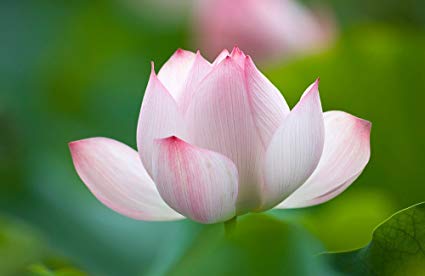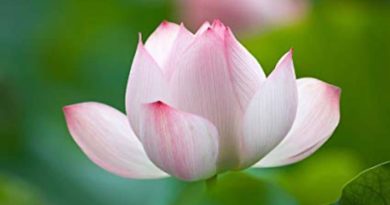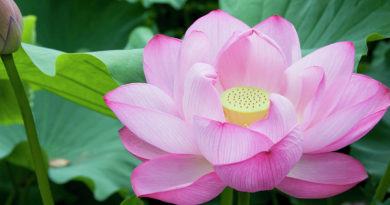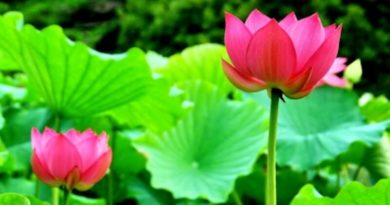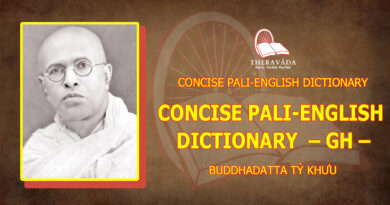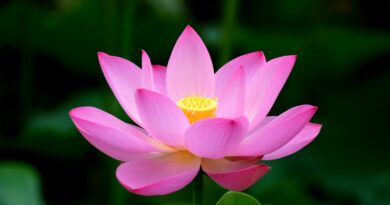SASANA ABROAD – 1. BIOGRAPHY OF THE SAYADAW U KUNDALABHIVAMSA
SASANA ABROAD
BIOGRAPHY OF THE SAYADAW U KUNDALABHIVAMSA
The Sayadaw was born in Waw Township, Bago District, Myanmar in 1921 to U Tha Phyo and Daw Pu. He became a samanera at the age of nine at the Waw Monastery. He studied at various learning monasteries, amongst which are the two well-known Shwe-hintha forest monastery and the Maydhini forest monastery.
He attained the title of Dhamma Lecturership in 1956, and another title of Dhamma Lecturership in 1958. On 4th January 1998, the 7th Waxing of Pyatho, 1359 M.E (the Golden Jubilee Independence Day of Myanmar) he attained a yet higher title of Dhamma Lecturenship, that of Agga Maha Kammatthanacariya, vide Union of Myanmar State Peace and Development Council Notification No. 2198.
The Sayadaw taught Buddhist Scriptures to about two hundred monks daily at the Maydhini forest monastery for twenty years. After having meditated under the tutelage of the late Venerable Mahasi Sayadaw for a year, the Sayadaw decided to teach meditation. He founded the Saddhammaransi Meditation centre in 1978. The centre is now catering to two hundred yogis daily.
The Saddhammaransi meditation centre has three branches: –
(1) Sukhapatipada Saddhammaransi meditation centre at Kyauk-kon, Yangon, founded in 1993.
(2) Vivekatawya Saddhammaransi meditation centre founded in 1994, at Nyaunglebin
(3) Khippabhinna Saddhammaransi meditation centre of Indyne, founded in 1995.
The Sayadaw is also a prolific writer and has published several Dhamma books. He is one of the chief advisory Sanghas in the main Mahasi meditation centre in Yangon. Recently he has visited Singapore, the United Kingdom, France, the United States, Australia, Japan, Thailand and Malaysia at the invitation of the devotees, to conduct meditation retreats and to give dhamma talks.
PREFACE
In the introduction, the Sayadaw mentioned the dual purpose of writing this book. One is to gain general knowledge by the devotees, and the other to promote their kusala merits. The readers will notice the detailed account of time and places, and also the names of the devotees in connection with sponsorship, arrangement, alm-offering, etc. The attentive perusal of the departure and the arrival time for each flight from one place to another, provides information about the gain and loss in time when travelling to the East or West. The readers may find it uninteresting to read the names of the devotees who met him at the air port, offered breakfast, and lunch, etc. The reason, why the Sayadaw mentioned these names, is to honour them and to promote their kusala merits. Upon reading their names in the book, they will be delighted and joyfully reflect upon the merits they have done. Moreover, the readers will undoubtedly be joyous to know how far the Buddha’s Sasana has flourished in the world, after reading the names of the various meditation centres.
Although the Sayadaw’s dhamma talks mostly dwell upon the vipassana meditation, there are some talks suitable for the young people. “The Five Benefits of the Monks’ Visit” and “Reflection on the Buddha’s attributes” will foster kusala mind, especially in the young people. For in stance, to reflect upon “Buddha” to succeed in study and examinations: to reflect upon”Bhagava” for success in performance, work, etc.
The Sayadaw delivered simple and straight forward dhamma discourses, so that the meditators and the devotees would easily comprehend and practise accordingly. The repetition in the Sayadaw’s dhamma talks is meant to promote lasting memory of the listeners and it is also the Buddha’s ways of preaching. During the discussion periods at the end of the retreat, the Sayadaw answered the questions explicitly and patiently encouraged the meditators by saying “You may realise the dhamma if you strive hard” or “since you have the four conditions, it is evident that you will attain the dhamma in this very life”. From his answers, we can gauge the depth of his compassion and the extent of forhearance, the two outstanding characteristics of the Sayadaw. The illustrative one is the answer to a Ceylonese yogi on the cessation of sufferings in 3600 becomings, by one hour vipassana meditation.
The readers will find the frequent use of Pali terms, in this book, which is meant to introduce a precision of meaning that is impossible in English. It is also meant to provide an apportunity for the readers to add new Pali terms to their vocabulary.
The last and perhaps the most hopeful wish is that you may be able to tally your own experiences with the Sayadaw’s dhamma discourses. For example “The Four Conditions hard to attain”. If you have these and practise in depth, it can be a joyous and rapturous occassion when you realise that your experiences conform to the explanation given in the dhamma talks.
If you have not practised meditation yet, perhaps these dhamma talks can inspire you to begin now. Then wisdom, the most potent medicine, can bring you relief from the sufferings of your mind.
If anyone finds something amiss in this book, it is the sole responsibility of the translator. I offer you my best wishes and encouragement. After reading this book and practising accordingly, may you reach nibbana— the cessation of all kinds of sufferings, the highest goal.
INTRODUCTION
This condensed account of Sayadaw’s travel abroad has dual objectives, namely to enrich the general knowledge of the devotees and to propagate Kusala Dhamma. Daw Myo Thaint of Yangon and Daw Khin Khin Gyi of San Joes, California, arranged this trip for Sasana Abroad.
At the invitation of the London Vihara Trust, London, Sayadaw together with Dr. U Mya Aung and U Tun Kyi left Yangon by air at 8 a.m on Sunday June 5th, 1994 for Singapore. We arrived at Singapore at 12:10 p.m. (Singapore Standard time) or 10:40 a.m. Myanma Standard Time (M.S.T). U Aung Than, Daw Khin Mya Mya family, U Ne Win, Daw Than Than Sein and family, U Moe Kyaw Thoung and sister Ma Pa Lai met us at the Singapore Airport. On Wednes day June 8th 1994, Sayadaw, Dr. U Mya Aung and U Tun Kyi left Singapore for London at 11:00 pm and arrived at London on Thursday morning at 12 A.M (Singapore Standard Time) 5:55 a.m. Greenwich Mean Time (GMT}. Birmingham Sayadaw Dr. U Rewata, U Hla Myint from the Myanmar Embassy, London and the devotees from the London Vihara Trust were at the London Airport to meet Sayadaw and his team.
1. Duration of Sasana Abroad trip was two months and thirteen days.
Singapore – 4 days
London – 21 days
France – 7 days
U.S.A. Washington, D.C. – 5 days
New York – 5 days
San Jose – 16 days
Chicago – 5 days
Los Angeles – 5 days
Hawaii – 5 days
2. Countries visited were Singapore, Britain, France, U.S.A and Japan.
3. Dhamma talks and instructions were conducted in eight places. At the London Vihara, London, beginning from June 9th Sayadaw gave one dhamma talk for the foreign yogi, and another for the Myanmar yogi, every day. The dhamma talks were followed by discussions, especially by the foreign yogi. Some of the questions and the answers were very informative for the Myanmar devotees.
On June l3rd and l4th Sayadaw discoursed on the benefits of vipassana contemplation from 6:30 p.m. to 7:30 p.m. Dr. U Mya Aung translated the dhamma discourse into English.

